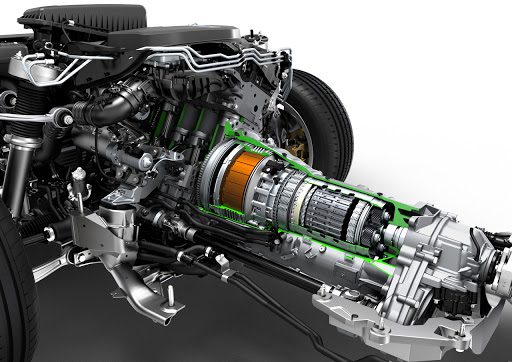A drivetrain malfunction in your BMW X3 can be a challenging experience. Understanding the potential causes and solutions can help you handle the issue confidently. From battery issues to engine overheating, identifying these problems early can prevent costly repairs. Explore how to diagnose and resolve these concerns effectively while maintaining optimal vehicle performance by reading on.
What is a Drivetrain Malfunction?
A drivetrain malfunction warning signals an issue in the system responsible for transferring power from your engine to the wheels. This system includes critical components like the engine, transmission, and driveshafts. When a fault occurs in any of these parts, your vehicle may display a drivetrain warning to alert you of potential performance risks.
Common causes range from sensor malfunctions and electrical glitches to mechanical wear and tear. This warning often reduces engine power to prevent further damage, affecting the car’s drivability. Recognizing these symptoms early can save you from more extensive and expensive repairs.
How Does It Impact Your BMW X3?
When a drivetrain malfunction occurs, your BMW X3 may enter a safety mode, limiting engine performance. You might experience sluggish acceleration, unusual noises, or vibrations during operation. These symptoms are your car’s way of protecting critical components from further harm.
Possible triggers include issues with spark plugs, ignition coils, or low-quality fuel. Regular maintenance and immediate attention to warnings can help maintain your car’s reliability. Watch for exhaust smoke or difficulty shifting gears, as these could indicate deeper drivetrain concerns.

Recognizing Warning Signs
Knowing the warning signs of drivetrain issues can help you take timely action. Early detection is critical to preventing severe damage and ensuring safe driving.
Dashboard Alerts and Indicators
One of the most noticeable signs of a drivetrain problem is the appearance of a Drivetrain Malfunction warning on your dashboard. This may accompany other alerts, such as the Check Engine Light. These indicators should not be ignored, as they often point to underlying issues that need immediate attention.
In some cases, transmission fluid leaks or electrical faults could be responsible for these warnings. Regular diagnostic checks can help pinpoint the exact issue and guide appropriate repairs.
Performance Anomalies
Drivetrain malfunctions often manifest through performance issues like reduced power, difficulty accelerating, or irregular shifting. You may also notice strange noises, such as clunking or grinding, especially during gear changes.
If these symptoms persist, it’s vital to consult a professional mechanic to diagnose the problem. Early intervention can prevent minor issues from escalating into more significant, costly repairs.
Common Causes of Drivetrain Issues
Understanding what triggers a drivetrain malfunction can help you address the root cause effectively. Here are some common factors contributing to these issues.
Faulty Sensors and Electrical Components
Malfunctioning sensors, such as those monitoring speed or engine performance, can send inaccurate data to your car’s control module. This may lead to drivetrain errors or erratic behavior.
Additionally, worn-out solenoids can disrupt the smooth flow of transmission fluid, causing hard shifts or transmission slips. Regularly inspecting these components can help maintain optimal performance and prevent sudden breakdowns.
Transmission Problems
Your vehicle’s transmission plays a crucial role in the drivetrain system. Issues like low transmission fluid, faulty seals, or worn gears can trigger drivetrain warnings. Slipping gears or delayed engagement are common symptoms of transmission troubles.
Addressing these issues promptly through fluid replacement or professional servicing can prevent extensive damage and ensure smooth gear shifts.
Engine-Related Faults
Engine issues, such as misfiring spark plugs or failing ignition coils, can also lead to drivetrain warnings. These problems disrupt the engine’s ability to deliver consistent power, affecting overall vehicle performance.
Keeping up with regular engine maintenance and replacing worn components on time can help avoid such malfunctions.
Fuel System Issues
A malfunctioning fuel system, such as clogged fuel injectors or a failing fuel pump, can reduce engine efficiency and trigger drivetrain errors. Poor fuel delivery impacts the engine’s ability to maintain smooth operation.
Regularly cleaning or replacing fuel system components can help ensure proper engine performance and prevent drivetrain-related alerts.
Diagnosing and Troubleshooting
Diagnosing drivetrain malfunctions accurately requires the right tools and approach. Here’s how you can effectively troubleshoot these issues.
Using Diagnostic Tools
An OBD II scanner is a valuable tool for identifying problems in your BMW X3. By connecting the scanner to your car’s diagnostic port, you can retrieve trouble codes that indicate the specific issue.
Follow the scanner’s instructions to interpret these codes. Cross-referencing the codes with a manual or online resource can help you decide whether to attempt repairs yourself or seek professional assistance.
Repair and Maintenance Tips
Proper maintenance is key to preventing drivetrain problems. Here are some strategies to keep your BMW X3 in top condition.
Common Repairs
Addressing drivetrain issues often involves replacing faulty components like solenoids, ignition coils, or fuel injectors. Transmission repairs, such as fixing leaks or resetting the control module, are also common.
Ensure you address warning lights promptly to prevent further damage. A thorough inspection by a qualified mechanic can help identify and resolve these issues efficiently.
Preventative Maintenance
Regular maintenance is essential for avoiding drivetrain problems. Schedule oil changes, check transmission fluid levels, and inspect components like sensors and solenoids periodically.
Listening for unusual noises or monitoring performance changes can help detect early signs of trouble. Staying proactive with these measures ensures your BMW X3 remains reliable and efficient.

